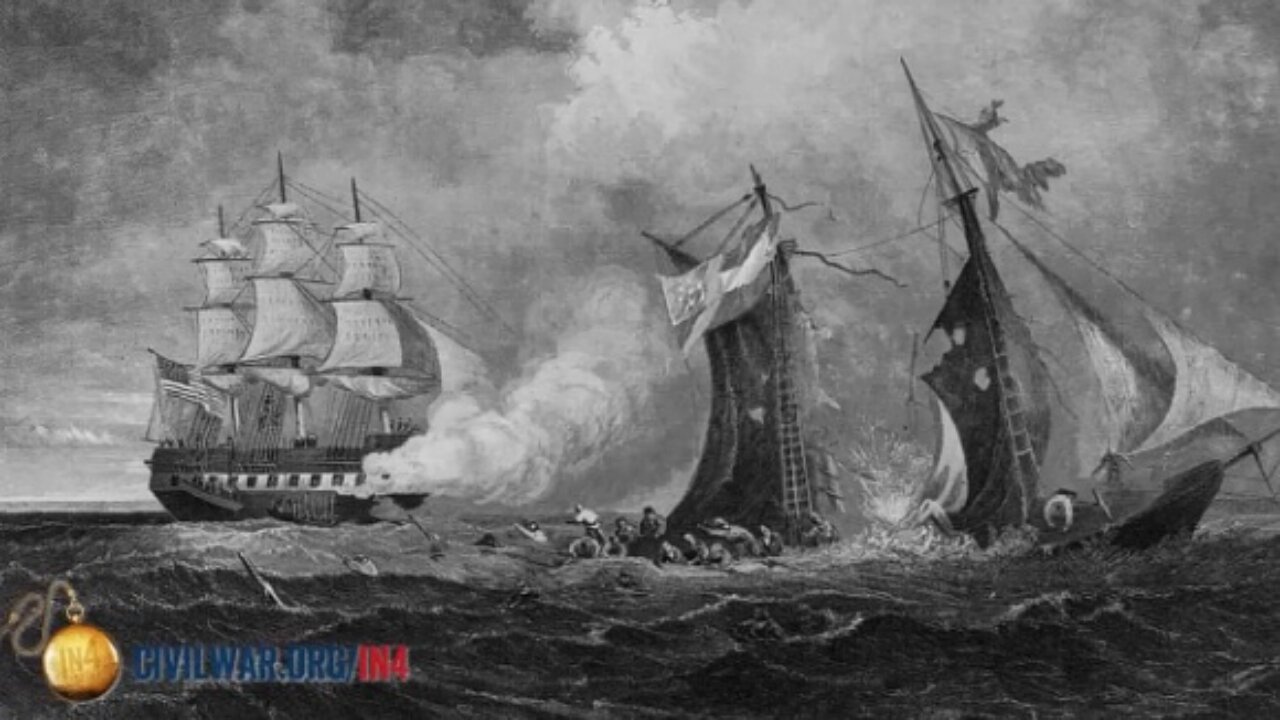Premium Only Content

Learn about the advancement in naval technology which influenced the outcome of the American Civil
We're here at Fort Foote, which is one of the Civil War era forts built to protect Washington, DC from the Confederate Navy. For centuries before the Civil War, naval warfare have been fought primarily in the same way. Large wooden ships powered by sail, and filled with as many cannon as they could carry, would pummel each other until one of them was too crippled to continue fighting or to escape.
But in the decades before the Civil War, a number of changes really altered naval warfare forever. The first of these changes was the invention of the steam engine. Steam power changed warfare in a number of different ways. Ships that were powered by steam were more flexible in what they could do, they could move against the wind more easily, and they could supplement their sail power with steam for extra speed. This gave them the ability to maneuver in ways the traditional sail-powered warships couldn't.
The second major change occurred in the realm of artillery. The Civil War was actually fought in the midst of a revolution in artillery that would eventually lead to more modern cannons seen in World War I and beyond. Military officers and engineers, in the decades before the Civil War, developed a number of different techniques for reinforcing the breech of a cannon to make it stronger.
Cannons, like the one behind me, were able to fire larger charges of gunpowder and bigger projectiles farther. This dramatically increased the range of the guns that were used during the war, and was further supplemented by the development of rifling, which were grooves carved in the inside of cannon barrels, and this gave a projectile a spin and made the guns more accurate. New shells were also developed that exploded on impact with ships so that a single shot could sink a wooden warship.
Naval architects on both the North and the South tried to find solutions to this problem. And eventually, they settled on placing ships with iron or steel armor. These ironclads, as they came to be called, came primarily in two different varieties. Casemate ironclads were basically ships that had iron plating attached to the outside. And Monitor-class ironclads, which were small boats or ships that sat low to the water and featured a revolving gun turret.
The first battle between ironclads was fought at Hampton Roads in March of 1862. The CSS Virginia, the Confederate ironclad, attacked blockading Union warships and easily drove them away. The next day, the Union ironclad, the USS Monitor, appeared on the scene, and thew two fought to a standstill.
The battle demonstrated the superiority of ironclads over wooden ships, and also their resilience to traditional naval weapons. This also changed a major axiom of naval warfare. The ship's armor, combined with the added flexibility of movement that a steam engine provided, enabled ships to more easily take on forts. Whereas normally, forts had been protected and had a stable platform for firing that gave them a huge advantage over ships.
Now, ships could steam around and continue moving so that forts we're not shooting at stationary targets. And they could better withstand impacts from guns stationed at forts. This meant the Confederates had to use new weapons to supplement their harbor defenses.
Torpedoes, which today we would call sea mines, were explosives that would be submerged below water and would detonate on the vulnerable hull of a Union warship. Torpedoes were also used as offensive weapons when they were attached to torpedo boats, which were vessels designed to carry the torpedoes on a spar and ram into a Union warship. For the most part, torpedo boats were not very successful, although there were a few instances of them damaging Union warships. Torpedo boats were designed low the water so that they presented a low profile.
Taking the idea one step further, Confederates developed submarines that submerged completely. The first successful submarine attack was carried out by the Confederate submarine HL Hunley in 1864, when it sank the USS Housatonic. The Confederates built other submarines as well, although none of them were particularly successful. Nevertheless, the naval technologies developed during the Civil War changed naval warfare for almost a century after the war. Only the advent of fixed-wing aircraft challenged the superiority of the submarines and battleships that had their origins in the 1860s.
Civilization
Civil war
-
 2:08:19
2:08:19
Tactical Advisor
19 hours agoThe Vault Room Podcast 006 | Farwell 2024 New Plans for 2025
194K11 -
 34:12
34:12
inspirePlay
1 day ago $5.84 earned🏆 The Grid Championship 2024 – Cass Meyer vs. Kelly Rudney | Epic Battle for Long Drive Glory!
92.6K8 -
 17:50
17:50
BlackDiamondGunsandGear
17 hours ago $3.17 earnedTeach Me How to Build an AR-15
66.4K6 -
 9:11
9:11
Space Ice
1 day agoFatman - Greatest Santa Claus Fighting Hitmen Movie Of Mel Gibson's Career - Best Movie Ever
123K49 -
 42:38
42:38
Brewzle
1 day agoI Spent Too Much Money Bourbon Hunting In Kentucky
83.6K13 -
 1:15:30
1:15:30
World Nomac
1 day agoMY FIRST DAY BACK in Manila Philippines 🇵🇭
65K10 -
 13:19
13:19
Dr David Jockers
1 day ago $12.03 earned5 Dangerous Food Ingredients That Drive Inflammation
83.4K17 -
 1:05:13
1:05:13
FamilyFriendlyGaming
1 day ago $16.00 earnedCat Quest III Episode 8
132K3 -
 10:39
10:39
Cooking with Gruel
2 days agoMastering a Succulent London Broil
84.9K5 -
 22:15
22:15
barstoolsports
1 day agoWhite Elephant Sends Barstool Office into Chaos | VIVA TV
59.9K1